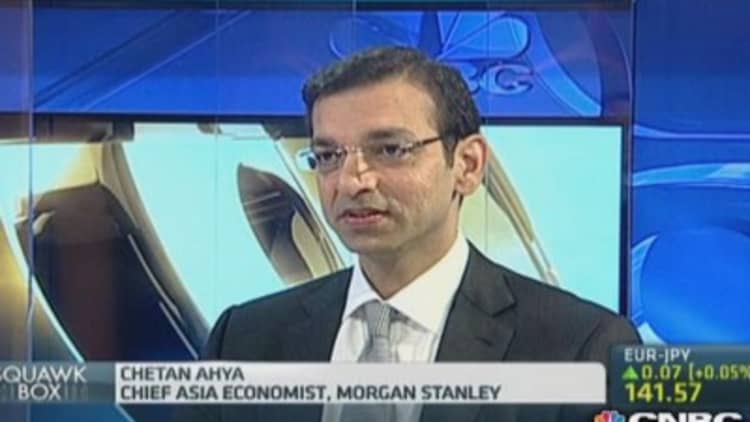With India's 16th national election under way, some parties appear to have an edge as technology, social media and big data play a key role in connecting with voters.
"The era of big data in Indian politics has arrived," said J Ramachandra, CEO of Gramener, a data analytics startup that is working with media companies to digest the huge chunks of election information to provide voters with user-friendly maps of the state of play.
At the opposition Bharatiya Janata Party's (BJP) election backroom in New Delhi, a team of over 100 young techies and consultants have propelled prime ministerial candidate Narendra Modi to the lead position.
Read More India elections: The most likely business winners
Through data analysis they have helped raise funds, rework advertisements and create detailed models for voter engagement in swing states as well as gender and minority voter clusters to increase the power of their micro-targeted strategy.
The result: a data-driven election campaign not very different from that of U.S. President Obama's, albeit somewhat smaller in size, scale and perhaps style.
"We have developed our own customized digital tools based on both commissioned and open source data that puts us in direct touch with voters," said Arvind Gupta, the BJP master strategist behind Modi's 3.67 million followers on Twitter, 12 million likes on Facebook and the party's 68 million page views on Google Plus.
Read MoreMeet the man tipped as India's next leader
Modi's unique digital events like 'Chai pe Charcha' (Talk over tea) are unprecedented election events that put the political leader directly in touch with people at tea stalls in villages at publicized localities through a combination of satellite, DTH, internet and mobile.
"Modi is perhaps one of the most tech-savvy politicians in the world and certainly the most active in India," says Amit Sheth, a professor at Wright State University's Knowledge Computing Center in Ohio.
Sheth, with the help of his students, is mining real-time data on the ongoing elections, which include voter sentiment, emotions and concerns in different constituencies and states. India's political parties then use this data to drive donations, enroll volunteers, and organize resources on the ground to improve the effectiveness of everything from door knocks and phone calls, to micro-messaging and social media.
Technology and data analysis have come to play a crucial role in this election which will use over 930,000 polling booths and 1.7 million voting machines, with 11 million personnel participating.

"The upset win of new incumbent Aam Aadmi Party (AAP) in Delhi polls, a few months ago, has been a catalyst for political parties to take social media data analysis seriously," said Pinstorm Founder Mahesh Murthy.
The AAP, or the Common Man's Party, has been no less constructive in using hard data to develop focused content for virally transmitted messages. Digital marketing companies like Pinstorm have been working with them on data analysis to achieve their strategic goals.
Even within the incumbent Indian National Congress (INC) – the country's oldest and largest political party – the importance of a data-driven campaign strategy has become apparent as the INC beefs up its technology component in what may be a too-little-too-late effort.
Read MoreLast 'BRIC' standing: Why analysts like India now
Party leader Rahul Gandhi has scrambled to build an online presence; it currently has less than 150,000 Facebook likes, around 10,000 page views on Google Plus and less than 100,000 followers on a Twitter page set up by party workers.
Two trends underlie the change
Two irreversible trends underlie the tech-driven fight for votes: a very large young voter base and advances in technology.
Over 100 million new young voters have been added to India's electorate this year.
"This election is about an [inspired], young, urbanizing and educated citizenry who are high on optimism, have tasted the fruits of economic buoyancy, are wired by smart phones and internet and eager to get things rolling on the ground," said R. Sukumar, Editor at Mint newspaper.
Read MoreWal-Mart trying to break through India barrier
Meanwhile, technology has advanced while the field of data analytics has matured. "Data is exploding at breakneck speed all around you. The trick lies in converting it from scattered, hard-to-decipher formats and refining it for strategic goals," said BJP strategist Gupta.
A new era in "electioneering" is here that promises to change the way elections are fought from here on out, analysts say. Gray-haired political strategists who relied on hunches and intuitions to gauge complex demographics of caste, religion, community and localities are on the way out. In their place are quants, programmers and data scientists.
"Data analytics is moving out of research labs into real-time monitoring of people's reaction to politics, policy and rapid responses to crisis situations. It will play a significant role in changing some political outcomes this election – enough of them to matter," says Sheth.




